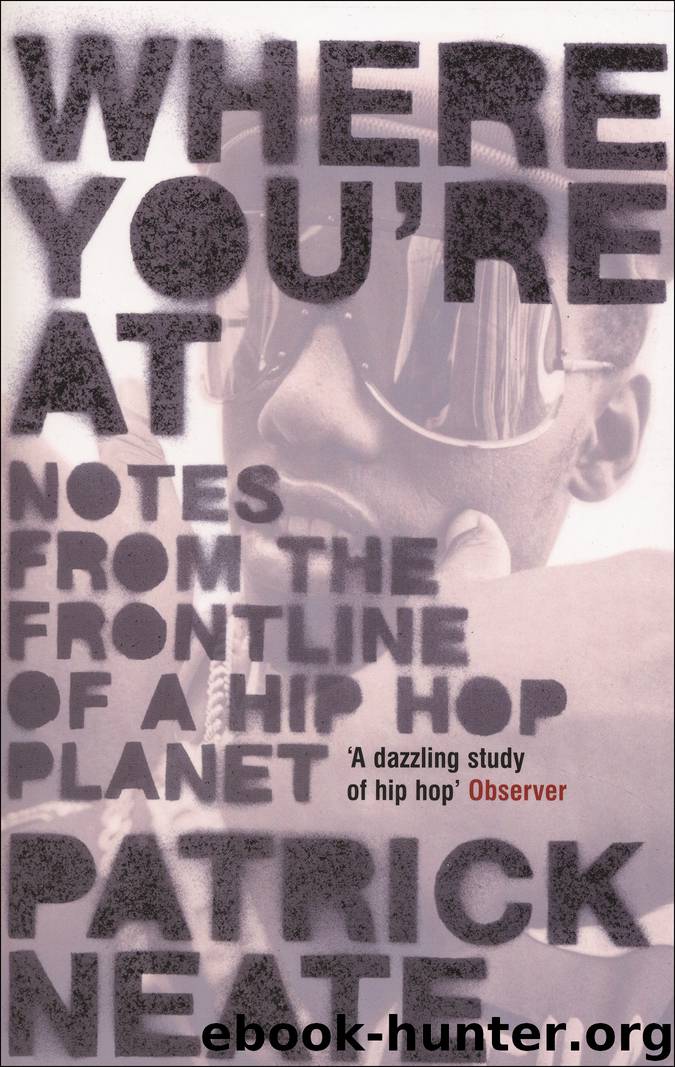Where You're At by Patrick Neate

Author:Patrick Neate
Language: eng
Format: epub
Publisher: Bloomsbury Publishing
Published: 2014-03-14T16:00:00+00:00
Part Four: Cape Town
I’m A African1
One of the most pernicious myths of apartheid propaganda was that white and black people arrived in an empty South Africa at around the same time. As Jan Van Riebeeck landed in Cape Town with his party of Dutch settlers in 1652, so the Nguni2 were making slow progress south down the Indian Ocean coastline and the Sotho occupied the high central plateau that towers above the tsetse belt. That was the story, anyway.
In fact, Nguni people had already been in South Africa for at least 200 years, while the archaeological record shows Sotho occupation of the Northern Transvaal stretching back a further millennium. More to the point, however, it’s notable that this propaganda didn’t even bother to reference the indigenous population first encountered by the white settlers when they landed at the continent’s southernmost tip. Because, by the time propaganda mattered, these people were extinct in South Africa, wiped out by a genocidal cocktail of murder, disease and virtual slavery.
The KhoiKhoi were nomadic herdsmen who lived on the grazing lands of the Cape coast while their near relatives, the San, were hunter-gatherers to the north and interior. With yellow complexion and fine hair and features, they didn’t look much like their fellow Africans. Nonetheless there is plenty of evidence (physical and linguistic) that the Khoi-San lived relatively harmoniously alongside their neighbours (Xhosa, for example, is punctuated by the distinctive clicking sounds that characterised Khoi-San languages). The arrival of the Dutch settlers, however, changed all that and, within little more than 200 years, the Khoi-San were gone.
Van Riebeeck arrived in the Cape under the authority of the Dutch East India Company rather than the government of Holland. So the original Cape colony was not an imperial frontier so much as a halfway house between Europe and the valuable Dutch possessions in the East; a stopover where the company’s ships could take on provisions of fresh vegetables and meat. But it didn’t take long for the settlement to start expanding. In 1656, after company cutbacks, I guess, nine free ‘burghers’ accepted what would these days be called ‘voluntary redundancy’ to take up twenty-eight-acre farms on the fertile banks of the Liesbeeck River. This was traditional KhoiKhoi grazing land and the occupation sparked the first South African war of resistance. After victory, Van Riebeeck claimed the territory by rite of conquest. It marked the beginning of imperial South Africa and the beginning of the end for the KhoiKhoi as their social structures started to disintegrate under this new pressure for land.
As the white settlers moved out to establish farms throughout the Cape Peninsula, so the need for labour became all important and slaves were brought in from Angola, Madagascar and the Far East. For more than a century, these farms (generally huge tracts of land because of the poverty of the grazing) existed in near isolation from Europe and even from Cape Town. Despite the apparent severity of master–slave relationships, sex between the races was as inevitable
Download
This site does not store any files on its server. We only index and link to content provided by other sites. Please contact the content providers to delete copyright contents if any and email us, we'll remove relevant links or contents immediately.
| Biographies | Business |
| History & Criticism | Instruments |
| Musical Genres | Recording & Sound |
| Reference | Songbooks |
| Theory, Composition & Performance |
The Goal (Off-Campus #4) by Elle Kennedy(13610)
Kathy Andrews Collection by Kathy Andrews(11768)
Diary of a Player by Brad Paisley(7522)
What Does This Button Do? by Bruce Dickinson(6173)
Assassin’s Fate by Robin Hobb(6166)
Big Little Lies by Liane Moriarty(5748)
Altered Sensations by David Pantalony(5072)
Pale Blue Dot by Carl Sagan(4961)
Sticky Fingers by Joe Hagan(4148)
The Death of the Heart by Elizabeth Bowen(3583)
The Heroin Diaries by Nikki Sixx(3521)
Beneath These Shadows by Meghan March(3282)
Confessions of a Video Vixen by Karrine Steffans(3277)
How Music Works by David Byrne(3237)
The Help by Kathryn Stockett(3116)
Jam by Jam (epub)(3051)
Harry Potter 4 - Harry Potter and The Goblet of Fire by J.K.Rowling(3033)
Computational Linguistics and Intelligent Text Processing: 20th International Conference, CICLing 2019 La Rochelle, France, April 7â13, 2019 Revised Selected Papers, Part I by Alexander Gelbukh(2967)
Strange Fascination: David Bowie: The Definitive Story by David Buckley(2837)
